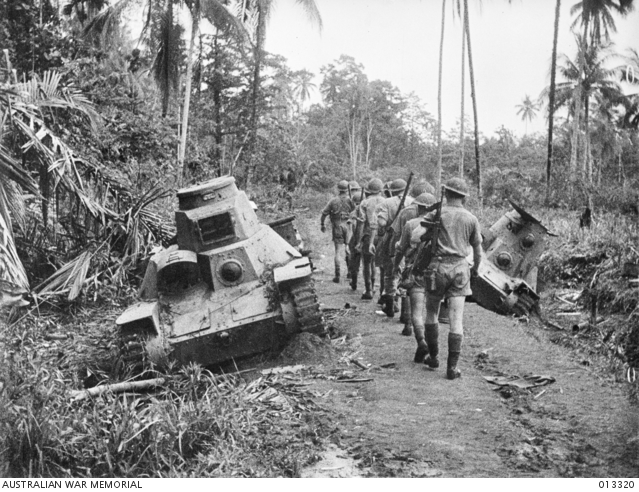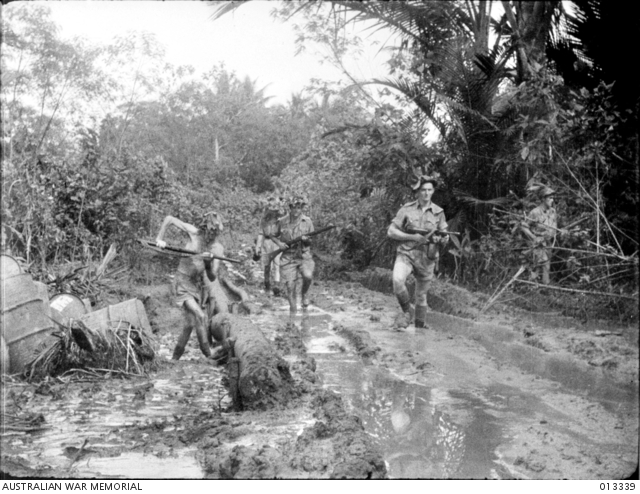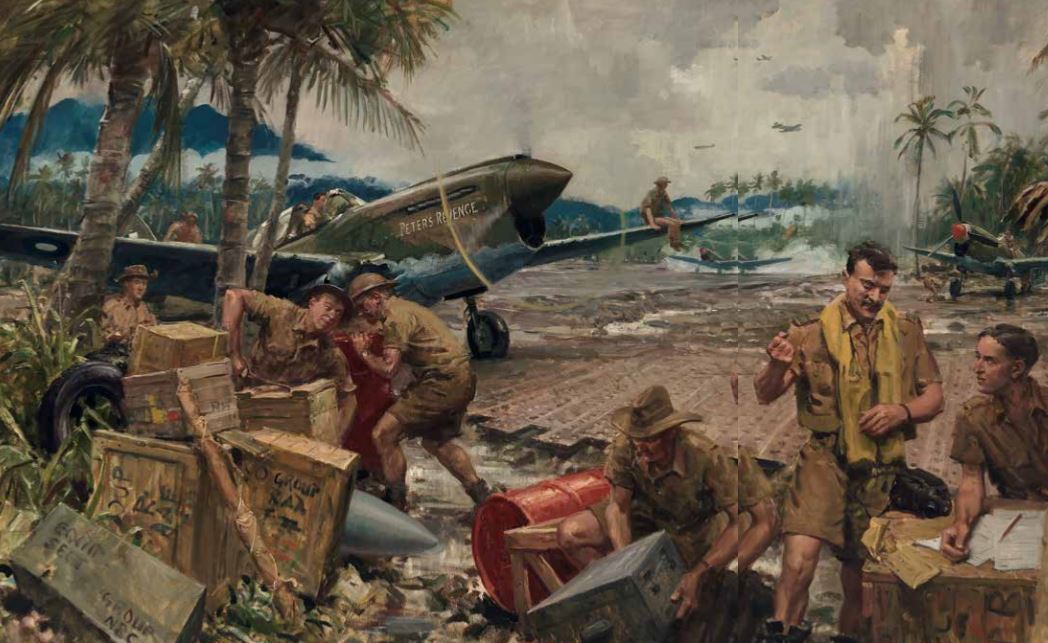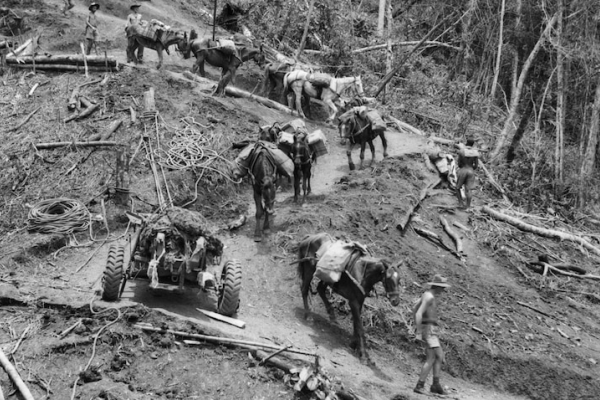Milne Bay
Milne Bay was a turning point in the Pacific war; here the Australian forces repelled the Japanese invasion force in Japan’s first decisive defeat on land.
Fought between 25 August and 7 September 1942, the battle raged through incessant rain, thick jungle, and malaria-ridden swamps – some of the worst conditions faced by Australian forces in the Second World War. The enemy’s target was an airstrip, which would have given the Japanese momentum towards Port Moresby and dominance over Papua. Research has shown that the Japanese believed they were facing a small number of defenders; in actuality there were almost 9,000 Allied troops, including the 7th and 18th Australian infantry brigades. The Allies had the additional advantage of air support, as No. 75 and No. 76 Squadrons of the Royal Australian Air Force were based at Milne Bay. Their Kittyhawks played a crucial role in the battle, destroying Japanese landing barges and stores, and strafing enemy positions from tree-top level.
Articles
Explore our articles relating to Milne Bay.
Remembering 1942: Milne Bay
Originally presented by Dr Peter Londey, on Thursday 5 September 2002 beside the Roll of Honour at the Memorial, as part of the Roll of Honour Talks series.
The Battle of Milne Bay - 75th anniversary
31 August 2017, marked the 75th anniversary of the high point of the Battle for Milne Bay in the Second World War.
General Clowes of Milne Bay
Milne Bay was Japan’s first land defeat of the war, but its victor won few laurels.
The RAAF at Milne Bay
Australian forces turned back a Japanese invasion of Papua in 1942.
The marks of war
A new display to mark the 75th anniversary of the battle of Milne Bay features a Japanese Type 95 Ha-Go Light Tank that was captured by Australian soldiers.
Battle of Milne Bay: a turning point in WWII
The World Today's Thomas Oriti speaks to Memorial senior historian, Dr Lachlan Grant, about the battle and its significance in military history.



